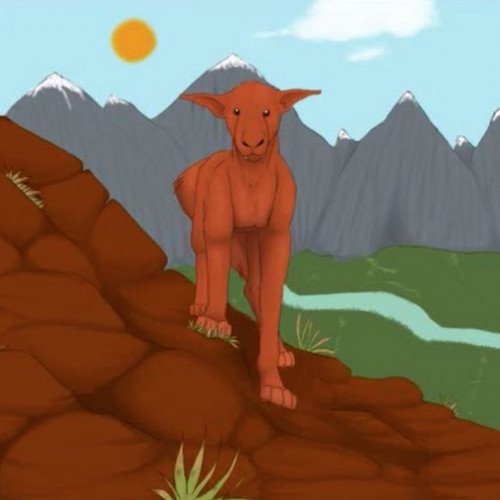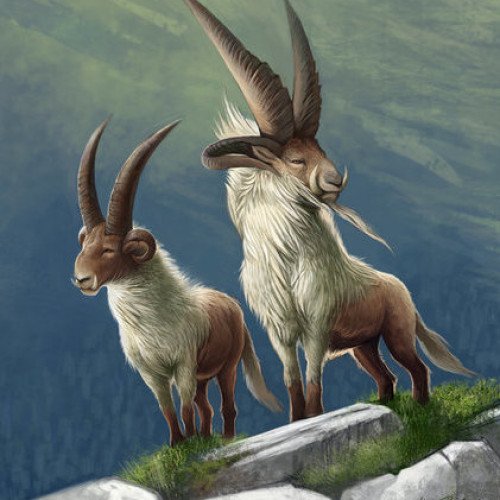Vote on Mythical creatures: Sidehill gouger vs Tanngrisnir and Tanngnjóstr

Sidehill gouger
In American folklore, a Sidehill gouger is a fearsome critter adapted to living on hillsides by having legs on one side of their body shorter than the legs on the opposite side. This peculiarity allows them to walk on steep hillsides, although only in one direction; when lured or chased into the plain, they are trapped in an endless circular path. The creature is variously known as the Sidehill Dodger, Sidehill Hoofer, Sidehill Ousel, Sidehill Loper, Gyascutus, Sidewinder, Wampus, Gudaphro, Hunkus, Rickaboo Racker, Prock, Gwinter, or Cutter Cuss. Sidehill gougers are mammals who dwell in hillside burrows, and are occasionally depicted as laying eggs There are usually 6 to 8 pups to a litter. Since the gouger is footed for hillsides, it cannot stand up on level ground. If by accident a gouger falls from a hill, it can easily be captured or starve to death. When a clockwise gouger meets a counter-clockwise gouger, they have to fight to the death since they can only go in one direction. The formation of terracettes has been attributed to gouger activity.Gougers are said to have migrated to the west from New England, a feat accomplished by a pair of gougers who clung to each other in a fashion comparable to "a pair of drunks going home from town with their longer legs on the outer sides. A Vermont variation is known as the Wampahoofus. It was reported that farmers crossbreed them with their cows so they could graze easily on mountain sides.Frank C. Whitmore and Nicholas Hotton, in their joint tongue-in-cheek response to an article in Smithsonian Magazine, expounded the taxonomy of sidehill gougers (Membriinequales declivitous), noting in particular "the sidehill dodger, which inhabits the Driftless Area of Wisconsin; the dextrosinistral limb ratio approaches unity although the metapodials on the downhill side are noticeably stouter." A special award, the Order of the Sidehill Gouger, is awarded to worthy members for hard and long standing volunteer efforts by the Alberta Group of the Royal Canadian Air Force Association.
Statistics for this Xoptio

Tanngrisnir and Tanngnjóstr
Tanngrisnir (Old Norse "teeth-barer, snarler") and Tanngnjóstr (Old Norse "teeth grinder") are the goats who pull the god Thor's chariot in Norse mythology. They are attested in the Poetic Edda, compiled in the 13th century from earlier traditional sources, and the Prose Edda, written by Snorri Sturluson in the 13th century. The Prose Edda relates that when Thor cooks the goats, their flesh provides sustenance for the god, and, after Thor resurrects them with his hammer, Mjölnir, they are brought back to life the next day. According to the same source, Thor once stayed a night at the home of peasant farmers and shared with them his goat meal, yet one of their children, Þjálfi, broke one of the bones to suck out the marrow, resulting in the lameness of one of the goats upon resurrection. As a result, Thor maintains Þjálfi and his sister Röskva as his servants. Scholars have linked the ever-replenishing goats to the nightly-consumed beast Sæhrímnir in Norse mythology and Scandinavian folk beliefs involving herring bones and witchcraft.